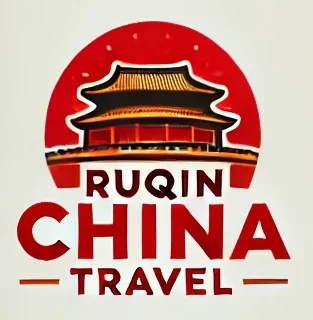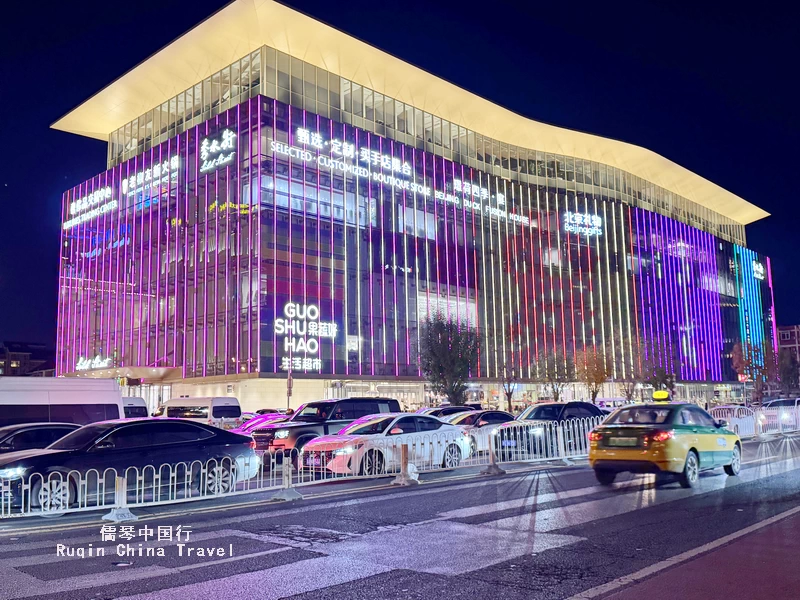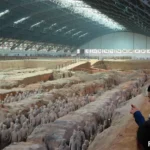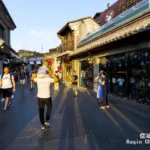Silk Street (秀水街, Xiùshì Jiē), also known as the Silk Market, is not a traditional street, but rather an iconic shopping mall in Beijing. Whether you’re shopping for traditional Chinese gifts, stylish clothing, or simply indulging in exquisite local food, Silk Street offers a complete cultural and shopping experience. In this guide, I’ll walk you through the best spots to shop, eat, and explore, along with tips to make your visit unforgettable!
1.Silk Street Overview
Silk Street (Silk Market) sits along the extended Chang’an Avenue, just steps from Beijing’s vibrant CBD. Its prime location makes it one of the city’s most accessible and iconic shopping spots. In fact, it’s often mentioned alongside the Great Wall and the Forbidden City—symbols of China’s rich history.
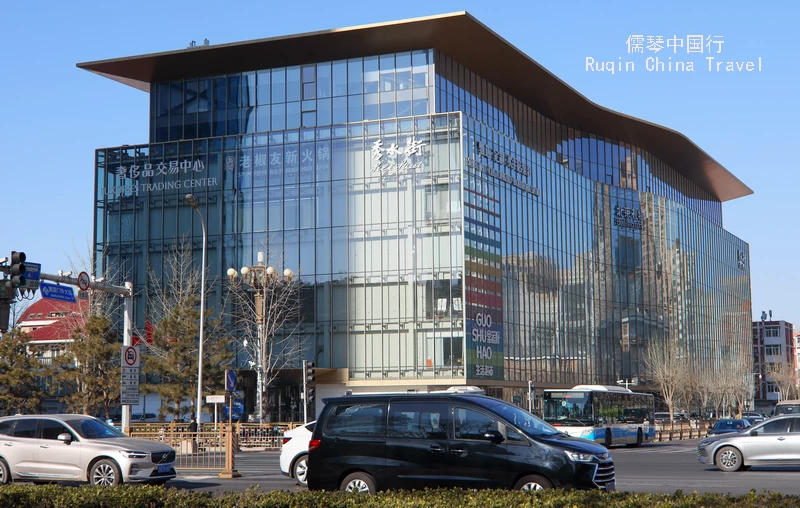
The market offers over 20 types of goods, from clothing and shoes to silk, jewelry, and unique crafts. You can find everything here—from traditional silk and porcelain to trendy fashion and custom designer pieces. It’s not just a place to shop; it’s a cultural experience.
Many visitors consider Silk Street the best spot in Beijing for unique souvenirs. It’s also a great place to dive into Chinese tea culture, ancient clothing styles, and Beijing’s famous local dishes.
After recent renovations, Silk Street is now a sleek shopping complex with two underground levels and six floors above ground. It’s even more welcoming to both tourists and locals.
2. How to Get to Silk Street Shopping Mall
By Metro: The most convenient way to reach Silk Street is by taking the subway.
Take Line 1 and get off at Yonganli Station (永安里站). There’s a dedicated exit that leads directly to the market—just follow the signs. Alternatively, you can exit at A1, and you’ll see the Silk Street building right in front of you.
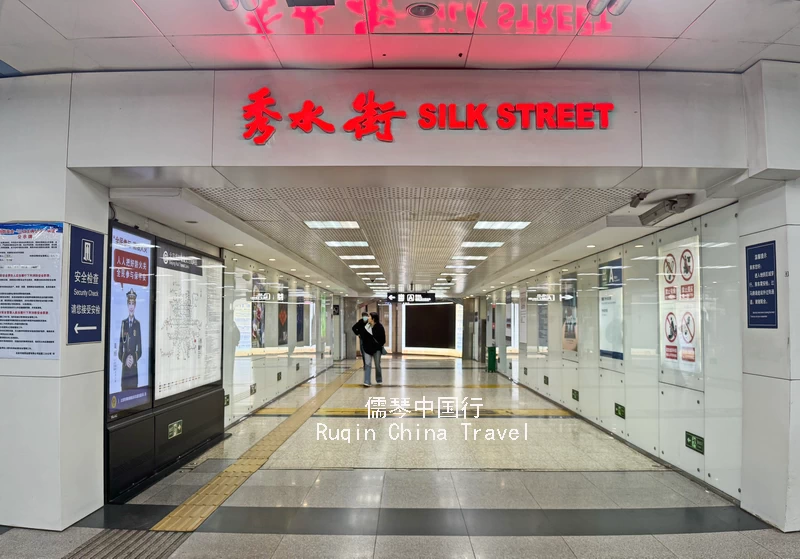
By Bus: Several bus routes pass near Silk Street, including:
Bus 4, 9, 28, 37, 43, 120, 126, 403, 639, 640, 668, 673, 728, 729, 802, and 810.
Nearby bus stops include Dabeiyao West, Yonganli Station, and Guomao Station.
By Car: If you’re driving, there are several parking lots around Silk Street. Most lots charge between 10-15 yuan per hour. The parking fees at Silk Street’s underground and above-ground lots are around 2 yuan per 15 minutes. The parking lots are spacious and open from 7:00 AM to 9:00 PM.
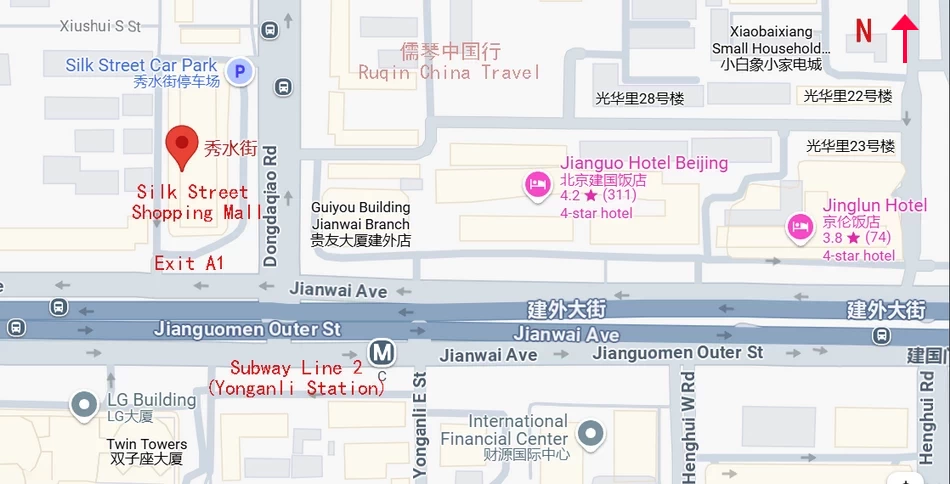
Opening Hours: from 9:30 AM to 9:00 PM daily.
Address: 8 Xiushui East Street, Beijing 秀水东街8号
Phone: 010-56767766
3. Each Floor of Silk Street Shopping Mall
B2 Floor: The Hub of Fresh Produce and Global Flavors
The B2 level is where you’ll find Guo Shu Hao Supermarket (果蔬好超市), a popular destination for locals and visitors alike. It’s a massive space of 4,000 square meters offering everything from fresh fruits, vegetables, and meat to dairy products and daily essentials.
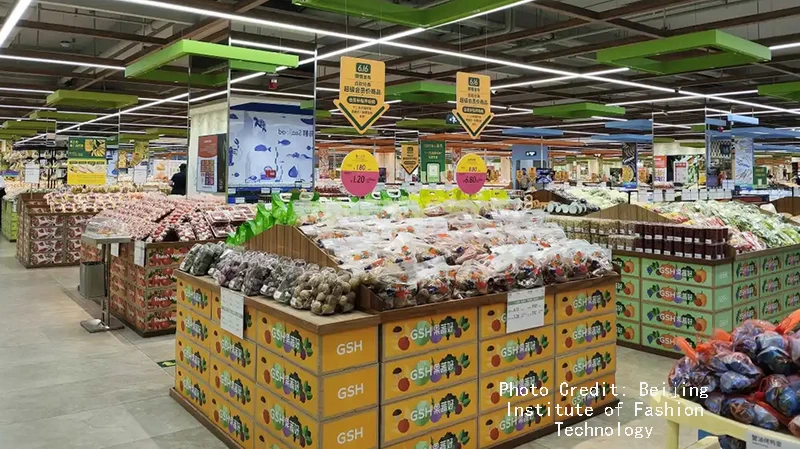
The markets serve the diplomats, with some even dubbing themselves “Diplomat’s Canteens” due to their proximity to Beijing’s embassy district.
B1 Floor: Luggage and Travel Essentials
Head to the B1 level for a wide range of luggage and travel accessories. Whether you’re looking for a new suitcase or stylish travel bags, this floor has it all, ensuring you’re ready for your next adventure.
1st Floor: Designer Brands and Traditional Fashion
On the first floor, you’ll be greeted with an array of designer brands and fashion-forward pieces that pay homage to Chinese traditions. From intricate hanfu (traditional Chinese clothing) to modern takes on qipao, the designs here blend the old with the new.
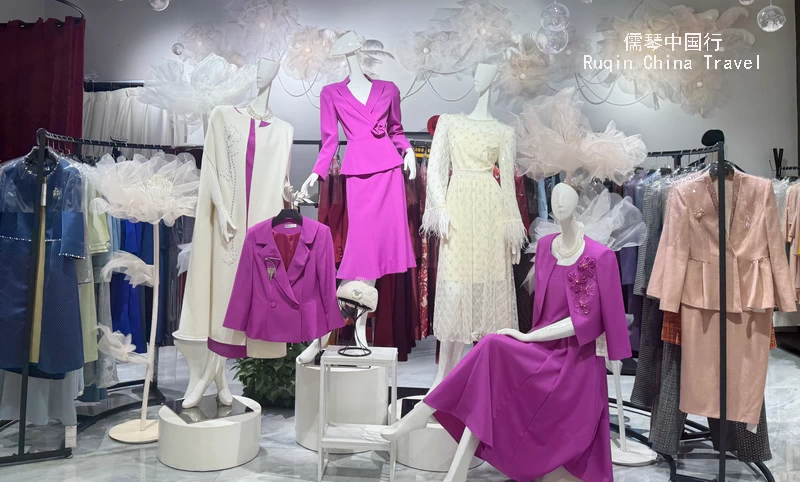
You can find elegant everyday wear, stunning accessories, chic handbags, and footwear, all showcasing the beauty of Chinese culture with a contemporary twist. This is the perfect place to pick out some stylish pieces for your travels.
2nd Floor: Women’s Fashion
The second floor is dedicated to women’s fashion, offering everything from casual outfits to elegant evening wear.
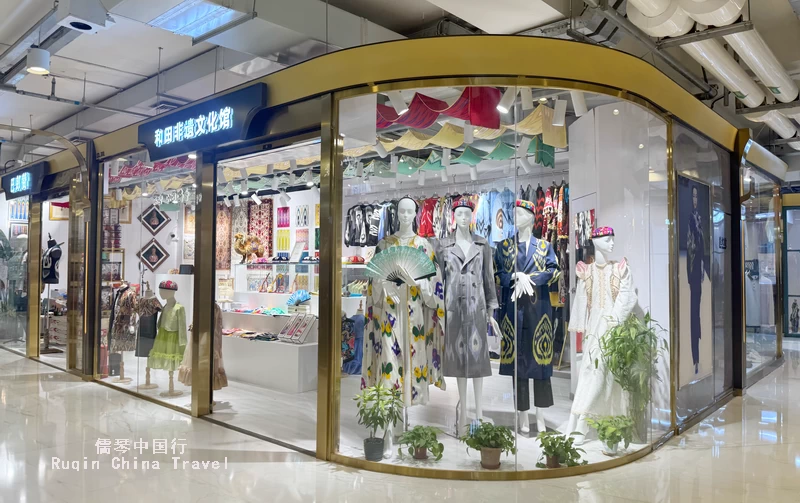
You’ll find a mix of contemporary styles and traditional Chinese elements, with plenty of options for every occasion.
3rd Floor: Men’s Fashion
For the gentlemen, the third floor has a wide selection of men’s fashion, featuring everything from sharp suits to casual wear.
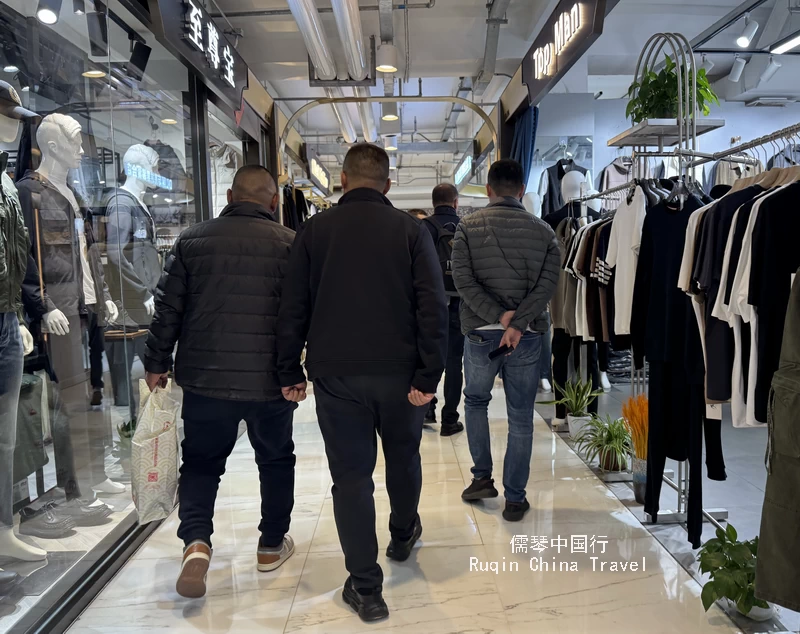
Whether you’re after a custom-tailored suit or trendy streetwear, you’ll find high-quality choices at reasonable prices here.
4th Floor: Jewelry, Handicrafts, and Art
The fourth floor is a treasure trove of jewelry, crafts, and unique gifts. From bracelets and necklaces to decorative figurines and traditional artwork, it’s a great place to find unique souvenirs.
The floor’s artistic vibe makes it a must-visit for anyone interested in Chinese craftsmanship.
5th Floor: High-End Tailoring and Custom Services
The fifth floor is all about customized fashion. Here, you can get bespoke clothing tailored to your exact measurements. Whether you want a custom suit, a traditional qipao, or personalized gifts, the professional tailors will create something unique just for you.
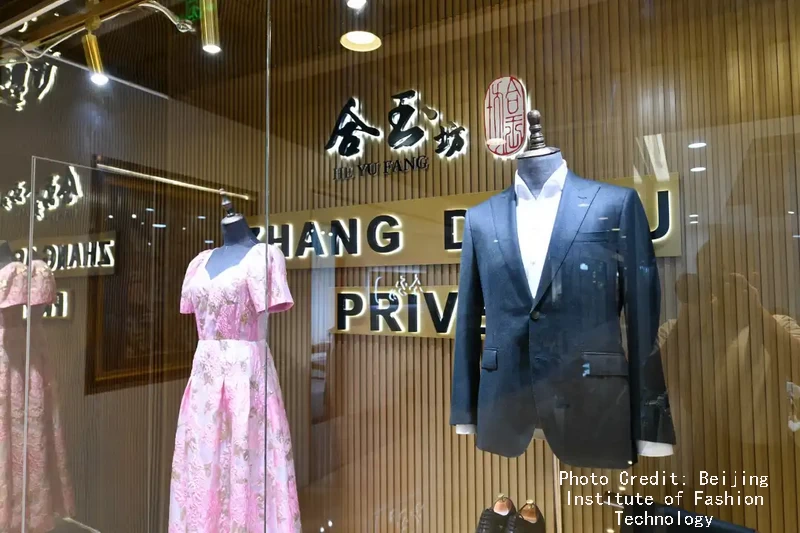
The services also include fabric selection, pattern design, and garment alterations. For those seeking quality silk products, there’s a 24-hour silk customization service, while custom suits are ready in just 18 hours. Silk Street even offers global shipping services, making it easier for international visitors to shop and have their purchases delivered home.
6th Floor: Dining with a View
The sixth floor is dedicated to food, with Jing He Si Ji—a high-end restaurant serving Peking and Shandong cuisine. It’s part of the famous Da Dong Roast Duck chain.
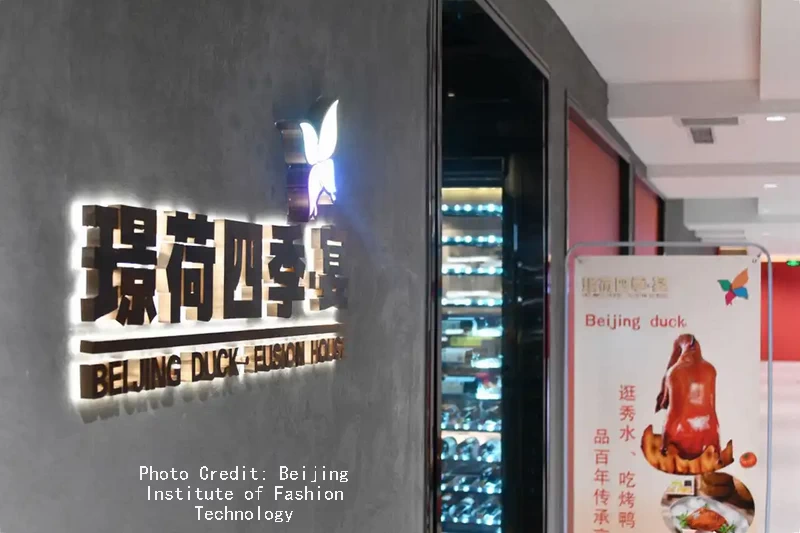
The signature dishes include jasmine tea-infused crispy roast duck, charred Tomahawk steak, and braised sea cucumber with scallions. The atmosphere here is fantastic, especially in the evening. Take a seat by the window, and you’ll have a stunning view of the CBD skyline, making it the perfect place to unwind after a day of shopping.
4. Practical Tips for First-Time Travelers to Beijing
If you’re a first-time visitor to Beijing, navigating Silk Street might feel like stepping into a whirlwind of sights, sounds, and shopping. Here are some practical tips to help you shop like a pro and avoid common pitfalls.
Language Tips: Getting Around with Mandarin
While many vendors at Silk Street may understand basic English, speaking a few words in Mandarin will go a long way. Simple phrases like “How much?” (多少钱, duōshao qián) or “Too expensive!” (太贵了, tài guì le) will instantly help you connect with sellers.
If you’re looking for a specific item, you can also use the word for it, such as 丝绸 (sīchóu) for silk or 珠宝 (zhūbǎo) for jewelry. Remember, showing interest in the local language is appreciated!
Cash vs. Card: Payment Preferences
In Silk Street, cash is often preferred. That said, many shops also accept mobile payments via WeChat Pay or Alipay, which are widely used in China.
If you don’t have a Chinese bank account, you can link your international credit card to these apps with a little help from your hotel or a local friend. Carry some cash for small purchases or street food, but for larger buys, mobile payment can save time and hassle.
Safety Tips: Stay Alert
Beijing is a relatively safe city, but like any busy market, Silk Street can get crowded. Keep an eye on your belongings at all times, especially in the busiest areas.
If you’re using a backpack, consider wearing it in front of you. When taking taxis or using ride-hailing apps like Didi, always ensure the vehicle matches the details in the app before getting in. It’s always safer to use official taxis or licensed drivers.
What to Buy: Authentic Souvenirs and Unique Finds
At Silk Street, you’ll find a range of items perfect for souvenirs. Silk scarves and traditional qipaos are a must-buy for many visitors. The quality of silk here can vary, so check the feel of the fabric and ask if it’s 100% silk.
Beijing tea is another great option—choose from famous varieties like Dragon Well (龙井茶, lóng jǐng chá) or Jasmine tea (茉莉花茶, mòlì huā chá). For a truly authentic experience, consider purchasing handcrafted porcelain or Chinese calligraphy.
What to Avoid: Watch Out for Overpriced or Fake Goods
While Silk Street is a treasure trove, not everything on offer is what it seems. Some vendors might try to sell luxury knock-offs, which, while tempting, aren’t the same as authentic designer goods.
Be cautious if the price seems too good to be true. If you’re looking for something high-quality, stick to reputable shops and ask about the origins of the items. Remember, bargaining can lower the price, but always do it respectfully.
Understanding the Local Culture: Bargaining is Key
In Silk Street, bargaining is part of the fun! It’s not just about getting a lower price; it’s about building a friendly rapport with the vendor. Start by offering a lower price than what’s initially quoted and see how the vendor responds.
Don’t be afraid to walk away if the price doesn’t feel right—sometimes, the vendor will call you back with a better offer. Always keep things polite and light-hearted. It’s a cultural exchange, not a confrontation.
5. Shopping Beyond Silk Street: Exploring Beijing’s Markets
Beijing offers an unforgettable shopping experience for every kind of traveler. Whether you’re a food lover, an antique enthusiast, or on the hunt for authentic silk, there’s something here for everyone. Below are a few must-visit markets besides the famous Silk Market ( for more information, check out: Top Markets in Beijing):
Panjiayuan Antique Market
For antique lovers, Panjiayuan Antique Market is a must. This bustling market is a treasure trove of Chinese history and culture, offering a vast collection of antique furniture, ceramics, calligraphy, and jewelry.
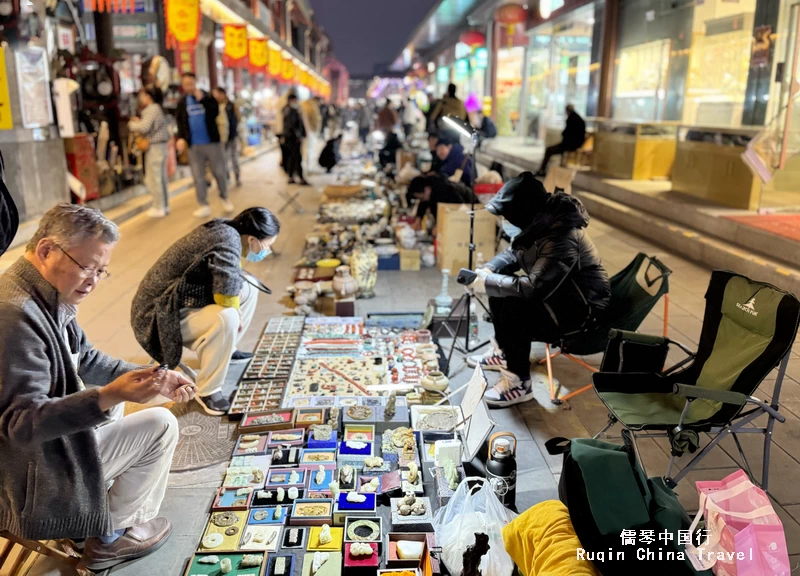
Walking through its sectioned markets feels like stepping back in time, with each stall displaying artifacts that tell a unique story. Whether you’re a seasoned collector or simply curious, Panjiayuan is a fascinating place to explore.
Daliushu Market
Known as one of the largest flea market in Beijing, Daliushu Market is a haven for those who love to hunt for bargains. This sprawling market offers a bit of everything—from secondhand electronics and vintage clothing to quirky collectibles.
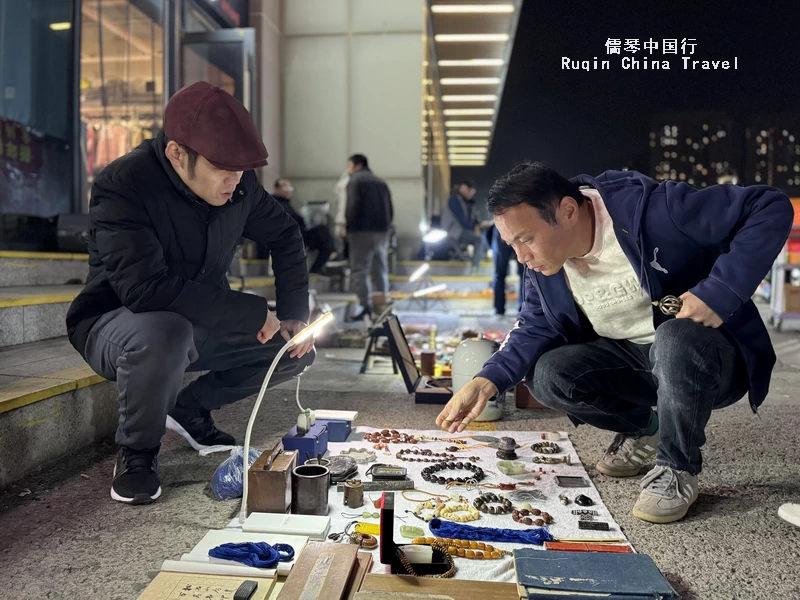
It’s a place where you’ll likely find items you didn’t even know you were looking for. The charm of Daliushu lies in its chaotic yet vibrant atmosphere. If you enjoy treasure hunting and scoring great deals, don’t miss this place.
Dazhalan Shopping Street
A short walk from the Qianmen area, Dazhalan Shopping Street is one of Beijing’s oldest and most culturally rich pedestrian markets. Here, you’ll find a wide range of traditional goods, from silk and handcrafted shoes to tea and Chinese art.

Many of the shops on this street have been around for centuries, offering visitors a glimpse into Beijing’s deep cultural heritage. The lively atmosphere and historical charm make Dazhalan a must-visit for anyone wanting to experience the old Beijing.
Yandai Xiejie Market
Nestled in the heart of Beijing, Yandai Xiejie Market offers a perfect blend of old and new. This narrow, charming street is lined with shops selling everything from antiques and jade to silk and traditional snacks.
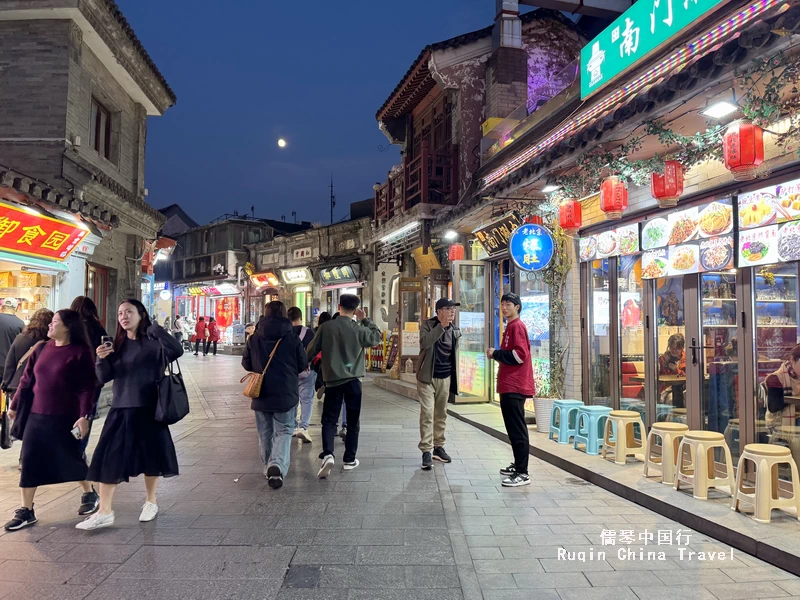
Amidst the bustling shops, you’ll also find trendy bars and cozy eateries, making it a great place to unwind after a day of shopping. The market is set against the backdrop of Northern Chinese architecture, adding a unique cultural touch to the whole experience.
6. City Walks Near Silk Street
When visiting Silk Street, why not take a moment to explore the city? Whether you choose to walk before or after your shopping spree, a quick city walk can add a new layer to your Beijing experience.
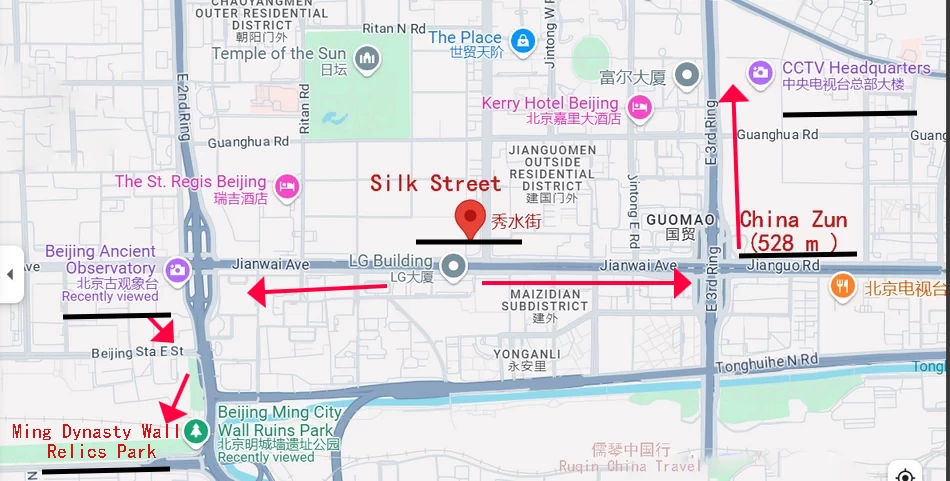
If you decide to walk after shopping, head east along Chang’an Avenue. Here, you can take in the sights of Beijing’s modern CBD, a bustling business district that showcases the city’s rapid growth.
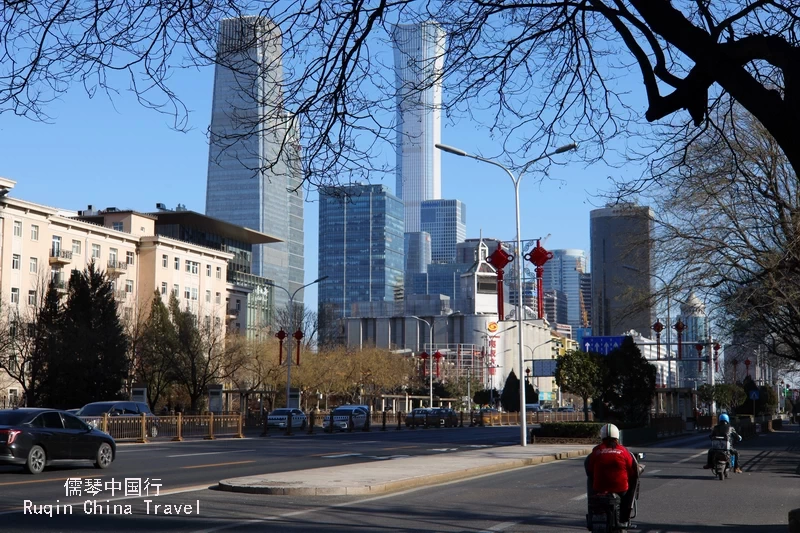
Be sure to check out China Zun, the tallest skyscraper in Beijing, which stands as a symbol of the city’s rise. You’ll also pass the striking CCTV Headquarters, a piece of contemporary architecture that has become one of Beijing’s iconic landmarks.
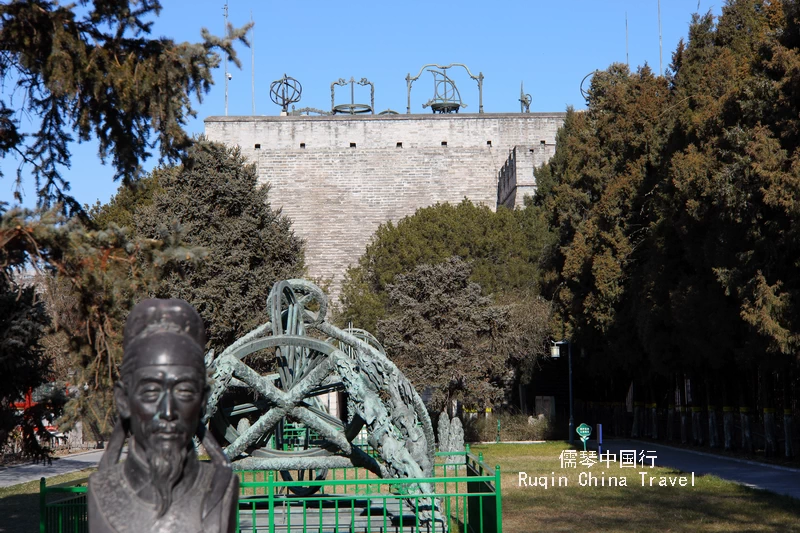
Alternatively, you can walk west along Chang’an Avenue. This direction leads you to Beijing Ancient Observatory, one of the oldest and most well-preserved observatories in China. It offers a fascinating glimpse into ancient Chinese astronomy and provides a contrast to the modernity you’ll experience walking east.
A short walk from Beijing Ancient Obseevatory, you will reach Ming Dynasty Wall Relics Park. A hidden gem in Beijing, the Ming Dynasty Wall Relics Park, also known as the Beijing Ming City Wall Ruins Park, offers a fascinating glimpse into China’s rich history. Located in the heart of Beijing, this park is not just a place for leisurely strolls; it’s a journey back in time.
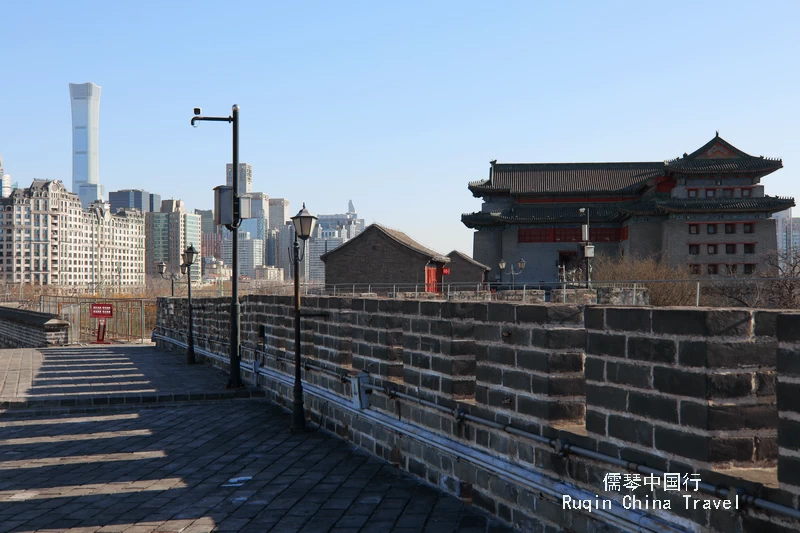
These city walks offer a perfect blend of Beijing’s rich history and cutting-edge modernity, making them a great way to enhance your Silk Street visit. Whether you’re admiring skyscrapers or exploring ancient science, these routes offer something for every traveler.
